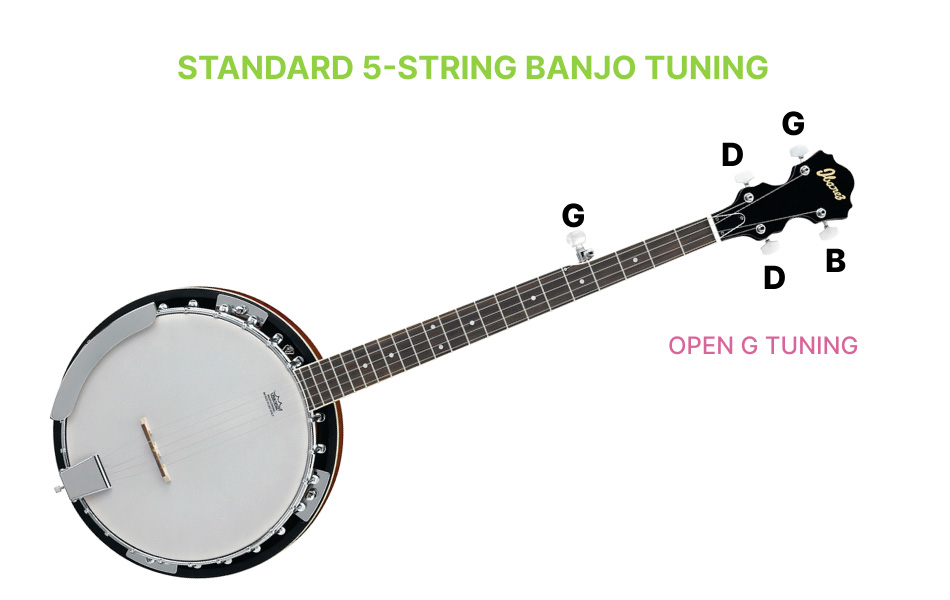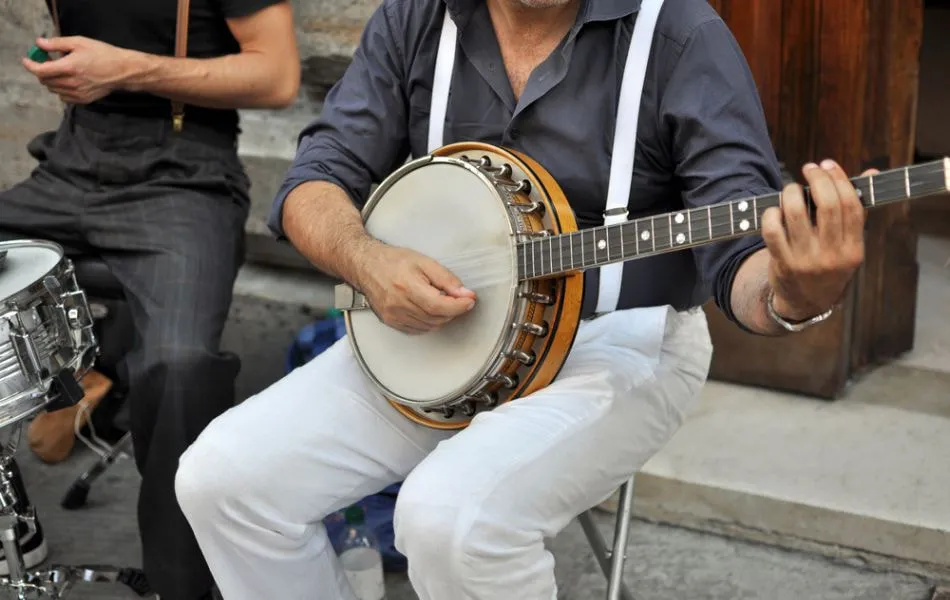
Types of Banjos
The banjo is a versatile and unique instrument that has been a staple of American music for centuries. With its distinctive twang and unique playing style, the banjo has been used in a wide variety of musical genres, from bluegrass and folk to jazz and country. There are many different types of banjos, each with their own unique characteristics and playing style. In this article, we will explore some of the most common types of banjos.
Main types of banjos
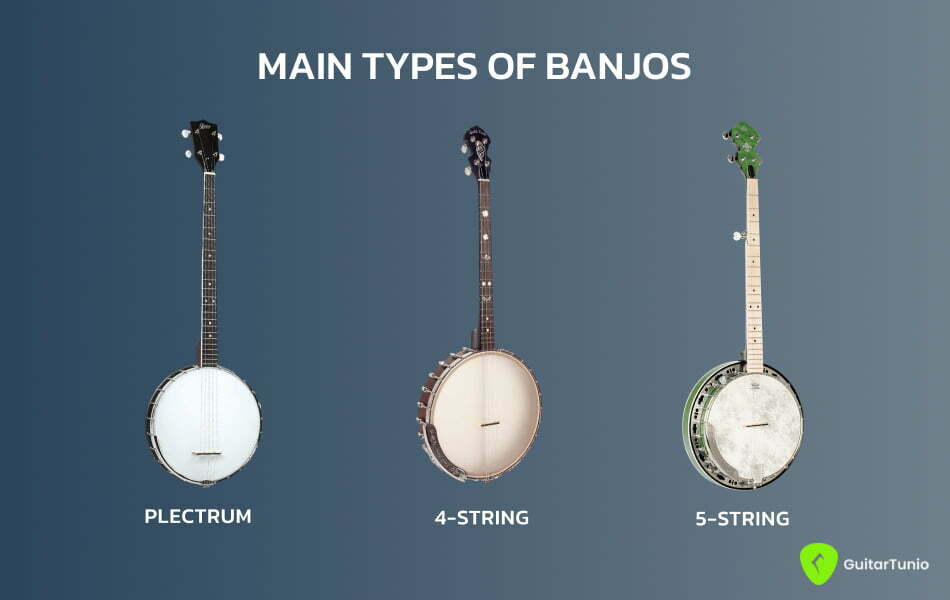
5-String Banjo
The 5-string banjo is the most common type of banjo, and is often used in bluegrass and folk music. The standard tuning for the 5-string banjo is G-Tuning, which is G-D-G-B-D. It has a long neck with a fifth string tuner that is located on the side of the neck, and the strings are typically played with picks. The fifth string, which is shorter than the other strings, is often used for drone notes or to play a melody line.
Tenor Banjo
The tenor banjo has a shorter neck and is tuned to a higher pitch than the 5-string banjo, usually in C-G-D-A. It is common in traditional jazz music and is typically played with a plectrum. The tenor banjo has four strings and is often used to play chord progressions.
Plectrum Banjo
Similar to the tenor banjo, the plectrum banjo has a shorter neck and is tuned to a higher pitch being to C-G-D-A. It is also commonly used in jazz music and is played with a plectrum. The plectrum banjo has four strings and is often used for chord accompaniment.
4-String Banjo
The 4-string banjo is similar to the plectrum banjo, but is often used in old-time music and has a different tuning. It can be played with either a plectrum or fingerpicks. The 4-string banjo has four strings and is often used for chord accompaniment. The standard tuning for the 4-string banjo depends on the style of music being played. For example, in Dixieland jazz, the tuning is often D-G-B-E, while in Irish traditional music, the tuning is often G-D-A-D.
You can find a reliable banjo tuner for 4-string and 5-string on the Guitar Tunio app. Click here to learn more about it.
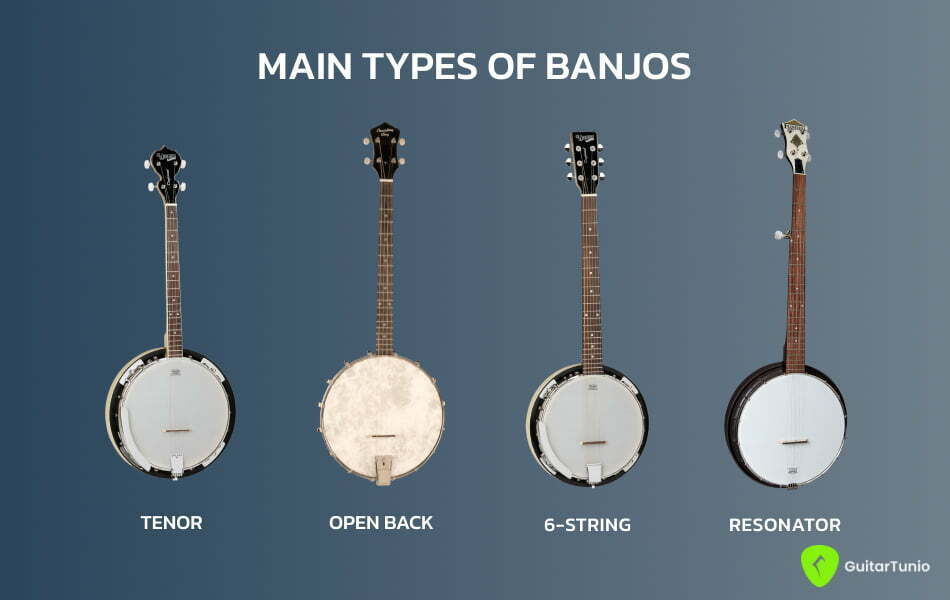
6-String Banjo
The 6-string banjo is a hybrid instrument that combines the tuning and playing style of a guitar with the resonator and body of a banjo. It is often used in country and bluegrass music. The 6-string banjo has six strings and is often used for melody lines and chord accompaniment. The tuning for the 6-string banjo is the same as the standard tuning for a guitar, which is E-A-D-G-B-E.
Open-Back Banjo
The open-back banjo does not have a resonator, which gives it a softer, mellower sound. It is often used in old-time and folk music. The open-back banjo has a shorter neck and is typically played with fingerpicks. The open-back banjo can be tuned in a variety of ways, depending on the player's preference. Some common tunings include G-Tuning, Double C Tuning, and Sawmill Tuning (E-B-E-G#-B).
Resonator Banjo
The resonator banjo has a resonator on the back of the body, which gives it a louder, brighter sound. It is often used in bluegrass and country music. The resonator banjo has a longer neck and is typically played with picks. The resonator banjo is often tuned in G-Tuning, which is the same as the standard tuning for the 5-string banjo. However, other tunings, such as Double C Tuning, are also used.
Other banjos
In addition to the banjo types mentioned earlier, there are a few other types of banjos that are worth mentioning:
- Electric Banjo
The electric banjo is a banjo that has been modified with electric pickups, allowing it to be amplified and played at higher volumes. It is often popular in rock and roll and other modern music genres.
- Ukulele Banjo
The ukulele banjo is a hybrid instrument that combines the body and sound of a banjo with the size and tuning of a ukulele. It typically has four strings and is tuned like a ukulele (G-C-E-A).
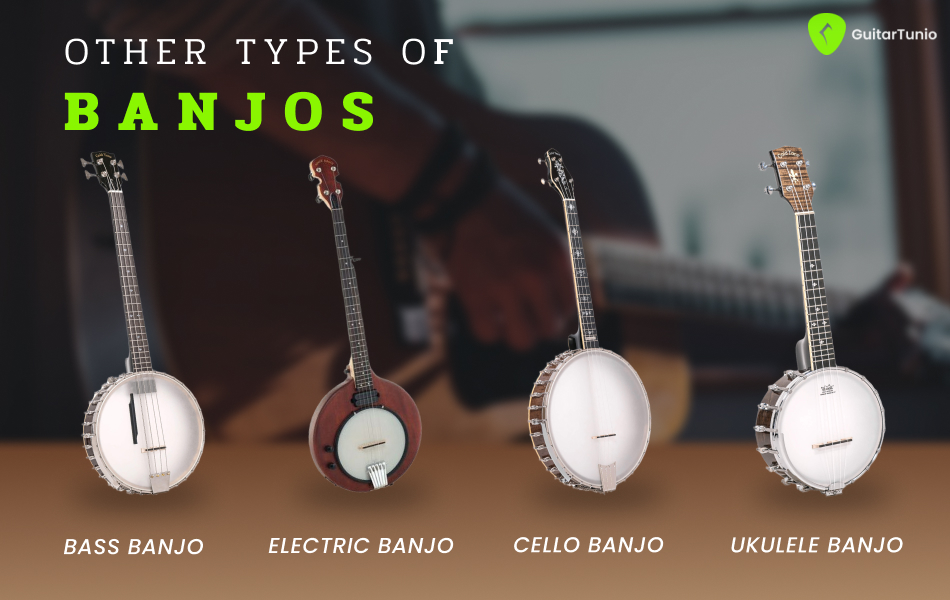
- Bass Banjo
The bass banjo is a larger version of the 5-string banjo, with a longer neck and a larger body. It is tuned lower than a standard banjo (E-A-D-G) and is commonly used in country and bluegrass music to provide a deep, resonant bass line.
- Cello Banjo
The cello banjo is a banjo that has been modified to have a longer neck and a larger body, similar to a cello. It is often tuned to C-G-D-A and is used in bluegrass and country music.
Conclusion
In conclusion, the banjo is a unique and versatile instrument with many different types that can be used in a variety of musical genres. Whether you're playing bluegrass, folk, jazz, or country, there is a banjo type that will suit your needs. So, pick up a banjo and start exploring the world of this amazing instrument.



